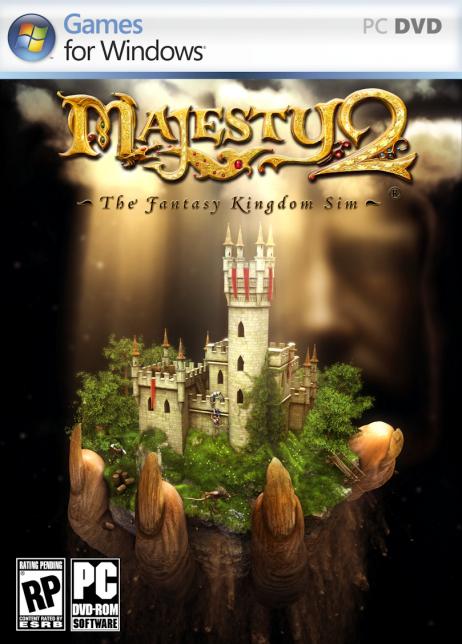Majesty 2: The Fantasy Kingdom Sim Review
-
Category: ReviewsHits: 6566

Your goal in Majesty 2 is to run a kingdom. You're the monarch, and you're in complete control -- sort of. You decide which buildings should be constructed (including temples and guilds for recruiting heroes, shops for selling items to heroes, and defensive structures), which spells and upgrades should be (invented,) and which heroes (including warriors, rogues and rangers) should be recruited. But the heroes act on their own, and you can only influence them by placing reward flags, which the heroes only follow if the bounty associated with them is to their liking. In the original Majesty, there were only two kinds of flags (attack and explore), but Majesty 2 adds two more (defend and stay away).
A lot of the fun from Majesty came from how difficult it was to control your heroes. Rangers would head off into the wild unknown, paladins would search for evil, and barbarians would look for a fight -- with anything -- and sometimes the heroes would pay attention to what you wanted, and sometimes they wouldn't. Worse, they'd often get themselves killed, forcing you to hire replacements. But now in Majesty 2, the heroes are robots. If you don't put any flags out, then they just mill around in your base. That makes it much easier to protect your palace and keep your heroes alive, but it's boring. It also gives you almost complete control over your heroes, since they only do things when you tell them to, and I found that discouraging. I liked the original Majesty because it wasn't like a real-time strategy game, but now the sequel almost is.
To go along with too much control over your heroes, Ino-Co also gives you powerful spells that you can cast. Majesty had spells, too, but they were mostly buffs for your heroes, and offensive spells that you could only cast near wizard guilds (and thus were mostly used for defending your base). But now in Majesty 2, you get a lightning bolt spell that you can cast anywhere, and for not a lot of money, and so you can defeat enemies without any help from your heroes, which again seems to defeat the purpose of the game.
Another odd decision from Ino-Co involves choices, or lack thereof. In Majesty you could place buildings anywhere, and you had to make decisions for how to set up your base. For example, placing three level 1 marketplaces would earn you more income than upgrading one marketplace to level 3, and so you had to decide whether to expand your base, making it more difficult to defend, or to keep your base compact, but earn less money. Certain buildings also gave you bonuses (such as blacksmiths reducing construction costs), and so the order you built things was important as well. Now in Majesty 2, those decisions are gone. You can only build one marketplace, buildings don't give any bonuses, and trading posts and temples can only be constructed at designated spots on the map. As a result, while in Majesty my bases almost always looked different, in Majesty 2 they almost always looked the same.
On the plus side, the game engine works much better now. The move from 2D to 3D was a success, and battles are colorful and fun to watch. The interface received a major facelift, including build queues, a pause button, and hero portraits (which allow you to easily select and examine your heroes). Ino-Co also added some nice features, like the ability to form parties of up to four heroes (so your wizards don't repeatedly get themselves killed), and a (lord) system, which allows you to keep some heroes with you between missions. And perhaps best of all, Ino-Co brought back George Ledoux to play your royal advisor. His voice acting was one of the highlights of Majesty, and he does another good job with Majesty 2.
Majesty 2 comes with a 16-mission campaign, plus 6 standalone missions, plus multiplayer support. The missions in Majesty 2 are much longer than the missions in Majesty (I think the longest mission I played in Majesty took 35 game days, but I regularly passed 150 in Majesty 2), and they should provide you with 20-30 hours of gameplay. Unfortunately, the missions in Majesty 2 are fixed rather than random, most of them have the same format (where the only real difference is the boss fight at the end), and the game doesn't keep track of your high scores for you, and so there's little reason to play through the missions more than once.
Overall, Majesty 2 has some pluses and minuses. The engine is solid and bug free, the game provides 20-30 hours of gameplay (which isn't bad considering its $30 price tag), and the game mechanics are still unique. It's just that Majesty 2 isn't as fun or as novel to play as Majesty, and, unlike Pirates! (which received a remake in 2004 for a game released in 1987), Majesty is still available for purchase and can be played on modern computer systems, and so it didn't really need to be modernized. I don't have anything against Majesty 2. It entertained me well enough while I played it, but if you haven't played Majesty yet, then that's the game I'd recommend you purchase.


